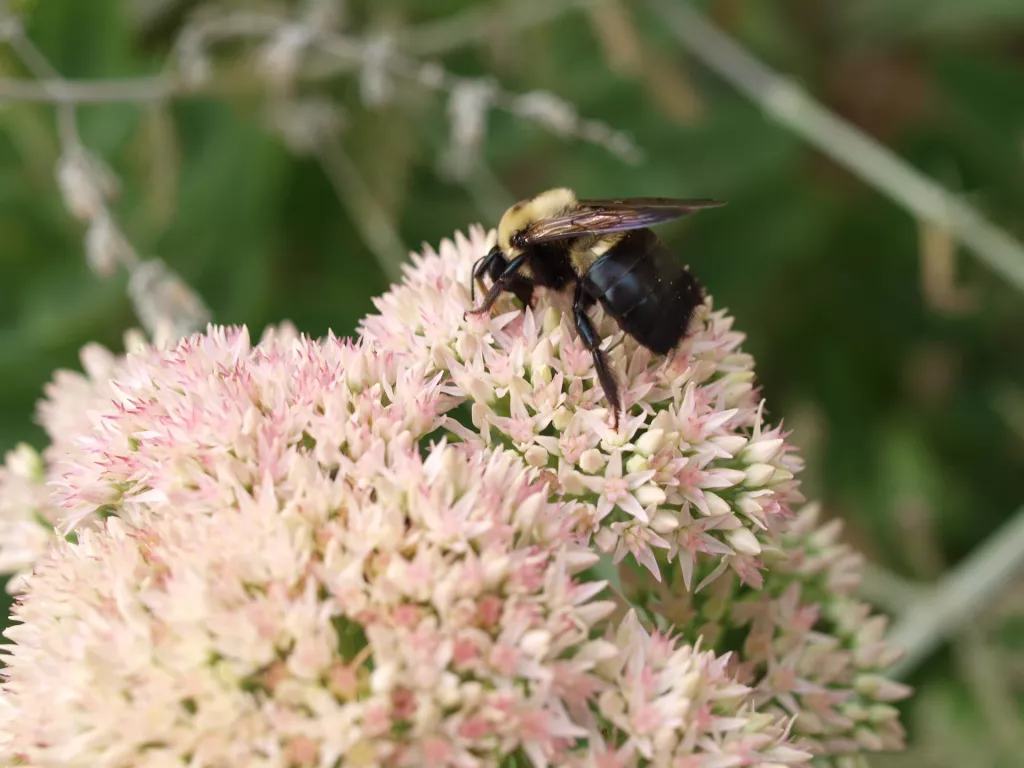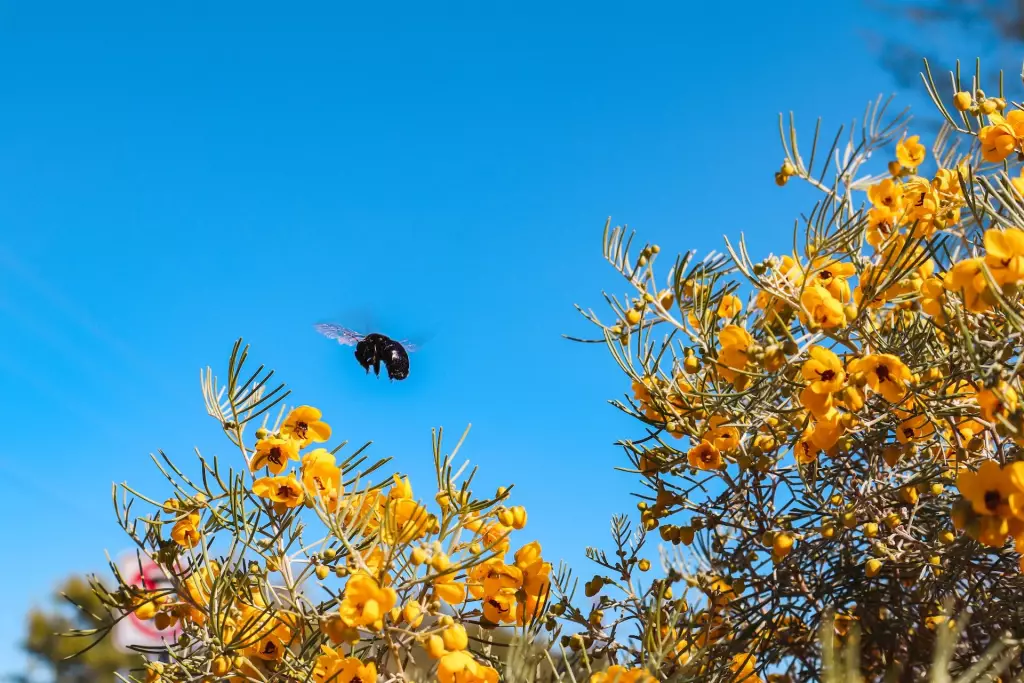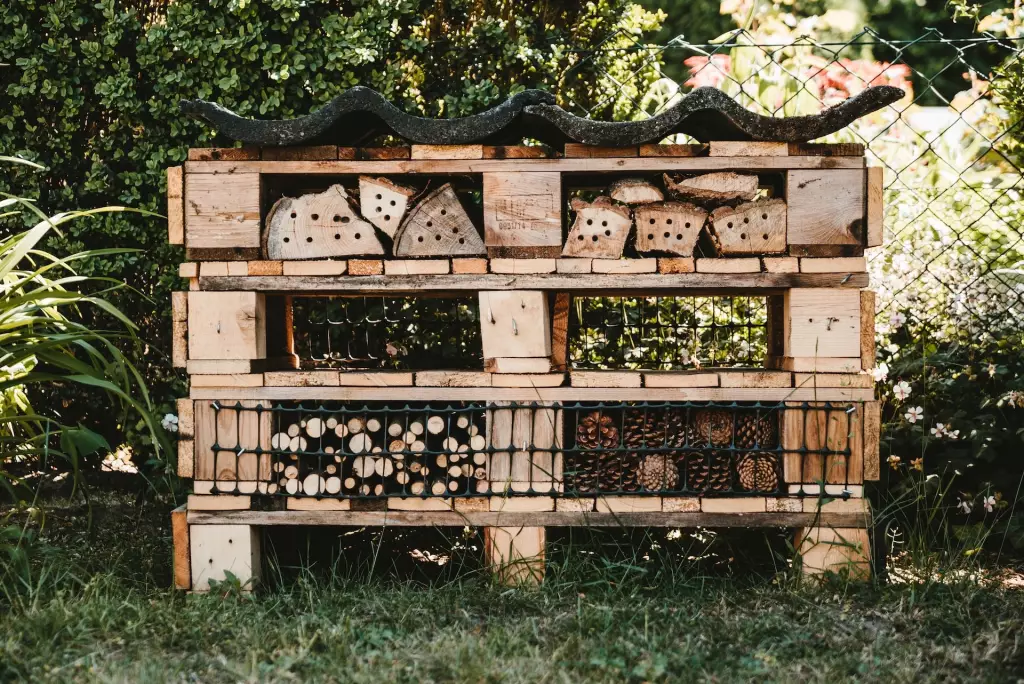How Long Do Carpenter Bees Live? (Lifespan Explained)
People frequently notice large, black bees hovering around the outside of their homes during the spring. These are most likely carpenter bees, so named after their habit of excavating holes in wood to rear their young. But how long do they live? Will they be eating up your home forever? Let’s find out.
Male carpenter bees typically have a one-year lifespan. Female carpenter bees can live for up to three years. Their lifespan is determined by the amount of wear and tear on their bodies. The health of a female carpenter bee deteriorates after a season of nest construction and foraging for her offspring.
Each bee's life cycle is determined by the amount of work it does and the time it takes to find food. Bees that are busy pollinating flowers live longer than those that stay at home and only feed the young.
Summary
- Female carpenter bees die shortly after creating 6–10 partitioned brood cells in the nest.
- Carpenter bees survive the winter by storing food and hibernating inside their nests.
- Carpenter bees mate and build their nests during Spring to prepare for the next generation.
- Homeowners can repel these bees without killing them by spraying almond oil or citrus oil on wood surfaces.

On this page:
Carpenter Bees Live from One to Three Years
Carpenter bees have a lifespan of one to three years. Each new generation is born in the late summer, emerging from nests in August and September to grow and feed, pollinating flowers along the way before hibernating for the winter.
In April and May, survivors emerge to mate. The female carpenter bee digs a tunnel for her larvae. She stores food and lays an egg in each brood chamber.
Spring is the season for nest-building and mating.
Adult carpenter bees die off after reproducing in July, leaving the next generation to continue the cycle when they emerge a month or so later.
A female will frequently create six to ten partitioned brood cells in a linear row in one gallery before dying. Males, too, have a short lifespan.
Carpenter bees survive the winter by hibernating inside their nests as adults. Bees begin foraging in April and May.
Foraging continues throughout the summer, with pollen balls and larvae that will develop into adult bees filling brood chambers by the end of July.
The new adults emerge in August. They begin foraging within a week or two of emergence and continue to forage until cold temperatures and a lack of floral resources cause them to hibernate.
How Long Do Carpenter Bees Live Without Food?
A bee can survive for a long time without food. When a bee becomes hungry, it will eat its own body fat, followed by its muscles, until it dies.
Bees can survive for up to six months without food, but only two weeks without water. When nectar is scarce or other sources of water are unavailable, bees will drink water droplets found on vegetation or dew.

While a bee can survive without food for a few days, they will die quickly if they do not have access to water. So, if you see a bee that appears to be in distress, give it a few drops of water to drink.
Bees can survive for months without food or water if temperatures remain above freezing and there is enough sunlight to collect pollen from flowers.
The actual lifespan varies by species and environment, such as temperature and the availability of food sources like nectar and pollen.
How To Identify Carpenter Bees
Carpenter bees are large and robust bees that measure 0.75–1 inch in length. Yellow, orange, or white fuzz covers their thorax. The abdomen, also known as the hind section, is gleaming and black. The head is nearly as wide as the thorax.
The female has a fully black head, whereas the male has yellow or white markings on his head. Females have a black face and a dense brush of black hairs on the back of their legs. Males have yellow skin.
Carpenter bees are often mistaken for bumblebees because they have the same size and appearance. Carpenter bee abdomens are shiny and hairless, whereas bumblebee abdomens are hairy with black and yellow stripes. The head of a bumblebee is also much narrower than the width of the thorax.
Bumblebees are social insects that live in underground colonies and work together to care for the nest and rear offspring. The carpenter bee, on the other hand, is a less social species that nests in wood cavities above ground.
Both are regarded as beneficial insects due to their ability to pollinate plants. As a result, you should avoid eliminating these insects unless absolutely necessary. They both feed on pollen and nectar and are important plant pollinators.
Fun fact: some carpenter bees can see in the dark.
What Do Carpenter Bees Do?
Unlike other common bees that live in colonies, such as honeybees and bumblebees, carpenter bees are not social insects.
Carpenter bees build individual nests in trees or into the frames, eaves, rafters, fascia boards, siding, wooden shake roofs, decks, outdoor furniture, or sides of buildings.

Painted or pressure-treated wood is significantly less vulnerable to attack. Carpenter bees prefer unpainted, weathered wood, particularly softer species like redwood, cedar, cypress, and pine.
They do not eat wood, but they do cause structural damage by drilling circular holes in wood to create tunnels.
Adults spend the winter alone, often in brood tunnels that have been previously constructed. Those who survive the winter emerge and mate in the spring.
Female carpenter bees that have been fertilized bore into wood, excavating a tunnel in which to lay their eggs. She creates an entrance hole that is slightly larger than her body, or about 12 inches in diameter. Typically, the first inch or two of the tunnel is cut against the wood grain.
After that, the bee will make a right turn and extend the tunnel 4 to 6 inches in the direction of the wood grain. She then makes a right angle turn and continues tunneling parallel to the wood surface.
Carpenter bees frequently expel their waste before entering their nest, so you may notice yellow stains on the surface of the wood just below the entrance hole. Coarse sawdust may also be present, and tunneling sounds may be heard within the wood.
Five or six cells are built inside the tunnel to house individual eggs.
Working backwards, the bee fills each cell with pollen gathered from spring-flowering plants, and a single egg before sealing it with regurgitated wood pulp.
Hatching and maturation take several weeks, with pollen providing food for the developing larvae.
Later in the summer, a new generation of adult bees emerges and forages on flowers before returning to wood for hibernation in the fall.
How to get rid of carpenter bees
A properly labeled insecticide applied specifically to each gallery can aid in the control of developing bees in the wood. After applying the insecticide, the holes should be left open for the females to enter and come into contact with the product.
After some time has passed, the holes can be sealed to prevent overwintering bees from reusing the galleries the following year.

Coating all exposed wood surfaces with paint or stains makes them less appealing to carpenter bees.
Small sections of wooden dowel or wood fill can be placed in nest entrances to prevent future nesting if carpenter bees have already created holes. If the female exits and the holes are blocked, she will drill a new hole nearby. Cover wooden surfaces with plastic or metal in extreme cases.
Another option is to place a piece of inexpensive, unpainted wood near known nest sites, ensuring that the trap wood is oriented in the same direction as the structural wood. Bees that nest in this wood, on the other hand, will not damage your home and can be eliminated by carefully removing, destroying, or treating the wood.
Carpenter bee traps are also available to attract females through a pre-drilled hole. When bees try to escape the trap, they fall into a clear container that’s either glass or plastic. Check that the trap wood has an existing nest opening.
Carpenter bee control can be difficult, so it is best to contact a licensed pest control professional for assistance. A professional will be able to inspect the property for galleries and select the best treatment method.



